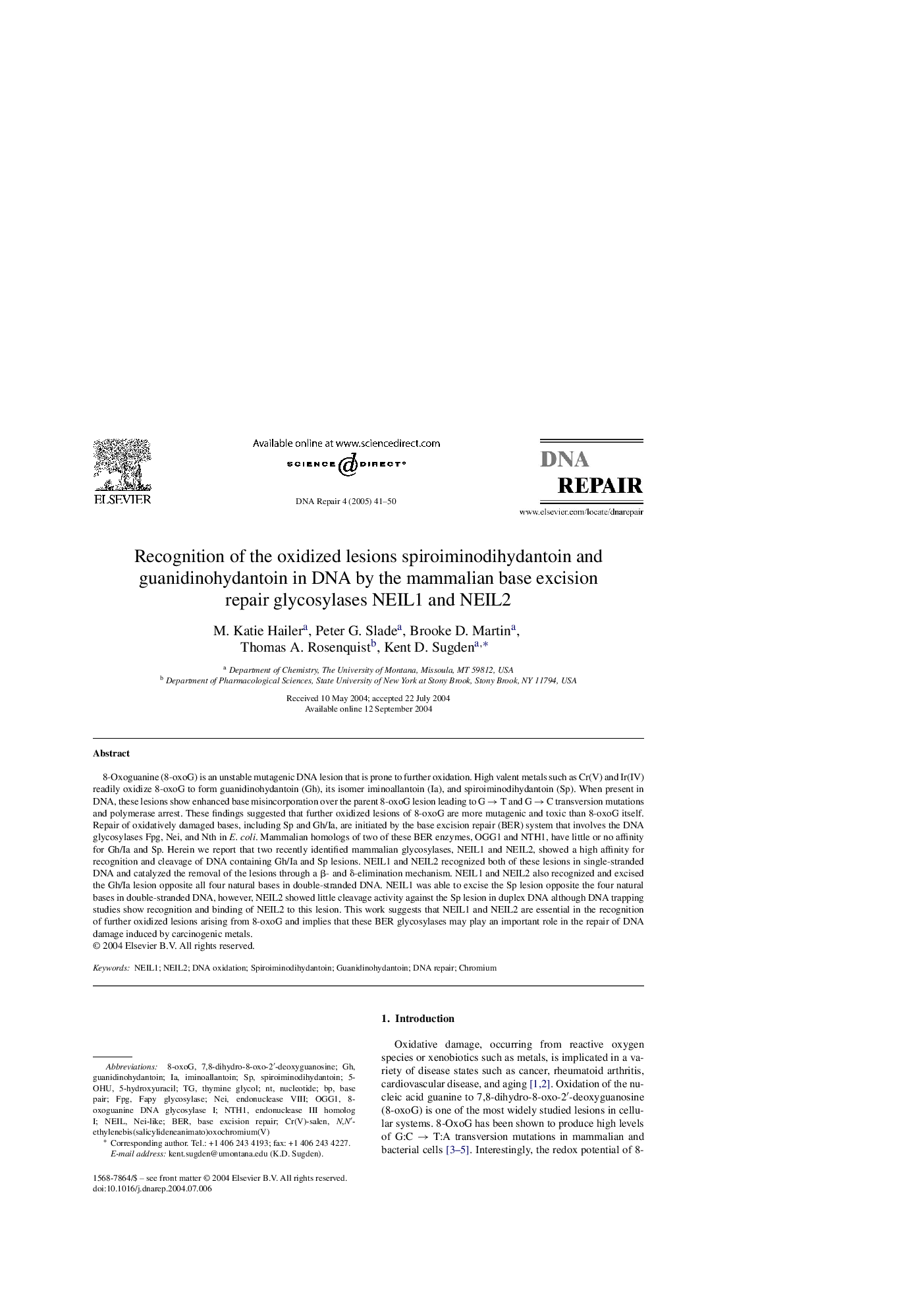| کد مقاله | کد نشریه | سال انتشار | مقاله انگلیسی | نسخه تمام متن |
|---|---|---|---|---|
| 10823705 | 1061926 | 2005 | 10 صفحه PDF | دانلود رایگان |
عنوان انگلیسی مقاله ISI
Recognition of the oxidized lesions spiroiminodihydantoin and guanidinohydantoin in DNA by the mammalian base excision repair glycosylases NEIL1 and NEIL2
دانلود مقاله + سفارش ترجمه
دانلود مقاله ISI انگلیسی
رایگان برای ایرانیان
کلمات کلیدی
Nei-likeBERNEILFPG8-oxoGSpiroiminodihydantoinNEIL2endonuclease VIIIOGG15-OHU5-hydroxyuracilNth1NEIL17,8-dihydro-8-oxo-2′-deoxyguanosine - 7،8-دی هیدرو-8-اکسو-2'-دگزسی گوانوزینDNA oxidation - اکسیداسیون DNADNA repair - ترمیم DNAbase excision repair - تعمیر پایه پایهThymine glycol - تینین گلیکولbase pair - جفت پایهNEI - درNucleotide - نوکلئوتیدChromium - کروم، فلزی سخت و خاکستری رنگ Guanidinohydantoin - گوانیدین هیداناتین
موضوعات مرتبط
علوم زیستی و بیوفناوری
بیوشیمی، ژنتیک و زیست شناسی مولکولی
زیست شیمی
پیش نمایش صفحه اول مقاله

چکیده انگلیسی
8-Oxoguanine (8-oxoG) is an unstable mutagenic DNA lesion that is prone to further oxidation. High valent metals such as Cr(V) and Ir(IV) readily oxidize 8-oxoG to form guanidinohydantoin (Gh), its isomer iminoallantoin (Ia), and spiroiminodihydantoin (Sp). When present in DNA, these lesions show enhanced base misincorporation over the parent 8-oxoG lesion leading to G â T and G â C transversion mutations and polymerase arrest. These findings suggested that further oxidized lesions of 8-oxoG are more mutagenic and toxic than 8-oxoG itself. Repair of oxidatively damaged bases, including Sp and Gh/Ia, are initiated by the base excision repair (BER) system that involves the DNA glycosylases Fpg, Nei, and Nth in E. coli. Mammalian homologs of two of these BER enzymes, OGG1 and NTH1, have little or no affinity for Gh/Ia and Sp. Herein we report that two recently identified mammalian glycosylases, NEIL1 and NEIL2, showed a high affinity for recognition and cleavage of DNA containing Gh/Ia and Sp lesions. NEIL1 and NEIL2 recognized both of these lesions in single-stranded DNA and catalyzed the removal of the lesions through a β- and δ-elimination mechanism. NEIL1 and NEIL2 also recognized and excised the Gh/Ia lesion opposite all four natural bases in double-stranded DNA. NEIL1 was able to excise the Sp lesion opposite the four natural bases in double-stranded DNA, however, NEIL2 showed little cleavage activity against the Sp lesion in duplex DNA although DNA trapping studies show recognition and binding of NEIL2 to this lesion. This work suggests that NEIL1 and NEIL2 are essential in the recognition of further oxidized lesions arising from 8-oxoG and implies that these BER glycosylases may play an important role in the repair of DNA damage induced by carcinogenic metals.
ناشر
Database: Elsevier - ScienceDirect (ساینس دایرکت)
Journal: DNA Repair - Volume 4, Issue 1, 2 January 2005, Pages 41-50
Journal: DNA Repair - Volume 4, Issue 1, 2 January 2005, Pages 41-50
نویسندگان
M. Katie Hailer, Peter G. Slade, Brooke D. Martin, Thomas A. Rosenquist, Kent D. Sugden,